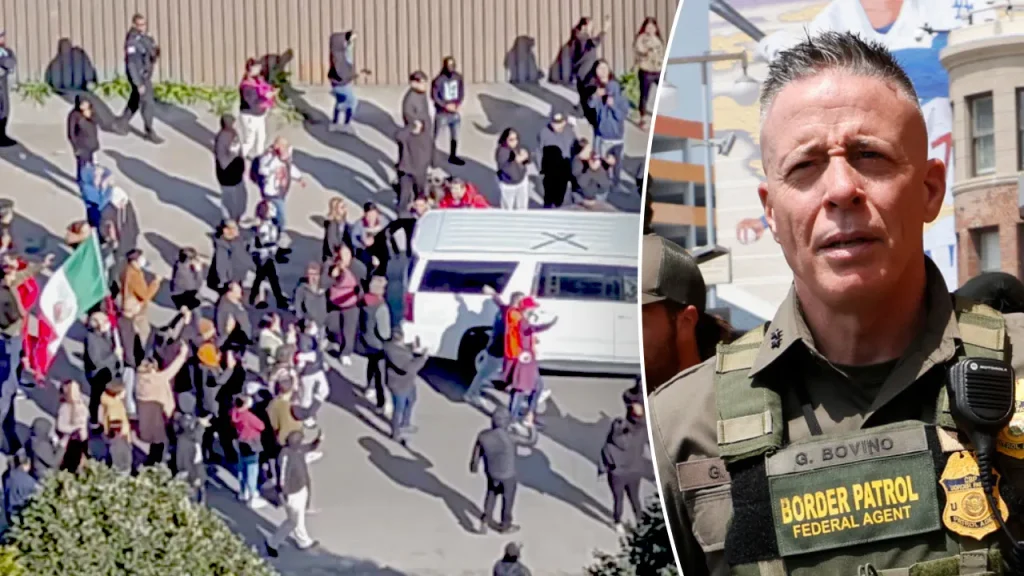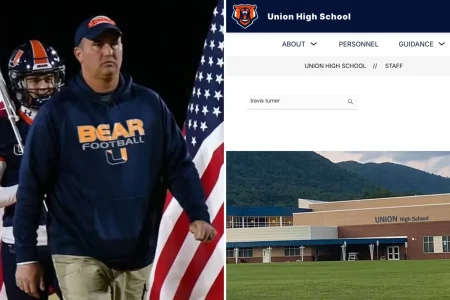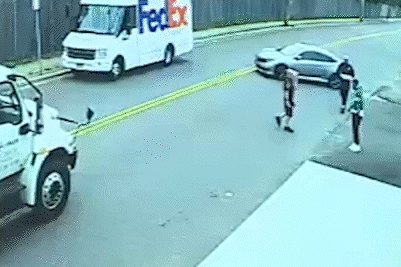Border Patrol Justifies Tear Gas Use in Contentious Chicago Immigration Raid
The Department of Homeland Security recently released footage to demonstrate that Border Patrol agents were justified in using tear gas during a controversial immigration raid in Chicago. The incident, which occurred on October 23 in the Little Village neighborhood, has sparked significant debate about law enforcement tactics and community relations in immigration enforcement operations.
The video evidence released by DHS tells a complex story of an enforcement operation that quickly escalated into chaos. According to the department, the operation began when agents identified four suspected gang members who had boxed in a Border Patrol vehicle before fleeing down an alley, switching license plates, and retrieving what they described as “high-powered weapons.” The footage shows agents apprehending a suspect from a white box truck, at which point two bystanders approached, shouting expletives at the officers. One woman can be heard saying, “Call the guys so they can come bro,” to a masked individual in black clothing, suggesting an organized response to the raid was being coordinated. What followed was a rapid escalation as dozens of protesters converged on the scene, creating a tense standoff between federal agents and community members.
As the situation deteriorated, DHS claims up to 100 “rioters” surrounded law enforcement agents who can be heard repeatedly ordering the crowd to “back up.” The footage shows the growing hostility of the gathering, with people shouting profanities, filming agents with cell phones, and one person waving a Mexican flag – a symbol of solidarity in Little Village, one of the largest Mexican-American communities in the Midwest. The confrontation intensified when unknown liquids and objects were thrown at officers. According to DHS, one rock struck Border Patrol Chief Gregory Bovino in the head, and artillery-shell-style fireworks were fired toward agents as the crowd continued to advance. Throughout this escalation, agents can be heard warning protesters to “Get off the street,” with one demonstrator responding defiantly, “No, this is my street.”
The most contentious moment came when Chief Bovino deployed tear gas to disperse the crowd after warning, “Get back or you will be gassed.” This action is at the heart of a legal dispute, as local media outlets and protest groups filed a lawsuit accusing Bovino of violating a temporary restraining order. That order, issued by U.S. District Judge Sara Ellis, prohibits federal agents from using chemical agents on protesters without facing an imminent threat or providing two prior warnings. DHS maintains that “the use of chemical munitions was conducted in full accordance with CBP policy and was necessary to ensure the safety of both law enforcement and the public,” noting that agents issued multiple warnings before deploying the gas. The footage also shows individuals vandalizing government vehicles, with one person allegedly marking gang symbols and another puncturing a tire with a large knife.
The immigration raid was conducted as part of Operation Midway Blitz, a joint enforcement campaign by ICE and Border Patrol targeting criminal illegal immigrants and fugitives with prior deportation orders in the Chicago area. The operation highlights the tensions between federal immigration enforcement priorities and local community concerns, particularly in immigrant-rich neighborhoods like Little Village. Chief Bovino appeared in federal court on Tuesday to face questions about this incident and other tear gas deployments in the city, where Judge Ellis imposed new oversight measures requiring him to provide daily reports to the court. Significantly, the judge denied Bovino’s request to loosen restrictions on tear gas use, insisting that agents must provide clear warnings and justification before using chemical agents.
This confrontation in Chicago represents a microcosm of the broader national debate about immigration enforcement tactics and community responses. On one side, federal authorities argue they need appropriate tools to safely conduct operations against individuals they identify as security threats. On the other side, community advocates worry about heavy-handed tactics that can traumatize neighborhoods and damage trust between residents and law enforcement. The Little Village raid occurred in a neighborhood often referred to as “La Villita,” a community with deep Mexican-American roots where immigration enforcement actions are particularly sensitive. The incident demonstrates how quickly immigration enforcement operations can transform from targeted apprehensions into larger community confrontations, especially in the current politically charged environment surrounding immigration policy.
As this case continues through legal channels, it raises important questions about the balance between effective law enforcement and community rights during immigration operations. Judge Ellis’s oversight requirements reflect a judicial attempt to establish clearer boundaries for federal agents operating in local communities. Meanwhile, the DHS release of the video footage represents an effort to shape public perception of the incident, highlighting the threats faced by agents while countering narratives of unprovoked force. How this particular case resolves may establish important precedents for how immigration enforcement operations are conducted in urban communities across the country, where the interests of federal agencies and local residents frequently come into tension with one another.











